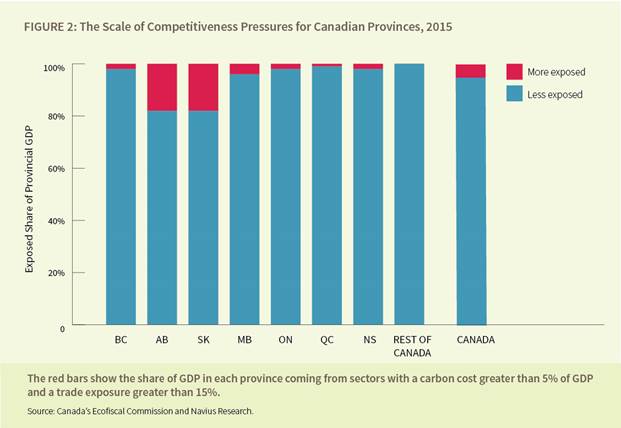The release of Ontario’s Cap and Trade Design Options is sending a powerful signal about the government’s commitment to climate action. Last week, Ontario’s Ministry of the Environment and Climate Change (MOECC) consulted stakeholders on its proposed approach for carbon pricing in Ontario including linking with Quebec and California, timing, program scope, and the use of offset credits.
What we’ve seen is generally consistent with best practice for a strong and robust system. The exception is Ontario’s proposed approach to distributing emissions allowances. As the government itself notes in its slide deck, auctioning ensures that allowances go to their highest-value use and generates revenues that can be recycled in complementary initiatives such as energy efficiency and public transit to achieve further emissions reductions.
Why then is Ontario proposing to distribute allowances to all industrial and institutional sectors free of charge in the first compliance period (likely 2017-2020)? The stated reason is to mitigate the risk of leakage (i.e., production moving to jurisdicions that have not adopted carbon policies) and help Ontario’s businesses stay competitive during the transition to the new cap and trade program.
However, a new report released by the Ecofiscal Commission, Provincial Carbon Pricing and Competitiveness Pressures: Guidelines for Business and Policymakers, suggests that these concerns are over-stated, since only a very small proportion of Ontario industry faces competitiveness pressures that would present a real risk of leakage. This is captured in the graph below, which indicates that even at a carbon price of $30/tonne – almost double that of the Western Climate Initiative – only 2% of Ontario’s GDP would come from sectors facing significant competitiveness pressures:
Ecofiscal Comission
In the Toronto context, there is little rationale for giving free allowances to the nine local industrial/institutional emissions sources that would be directly covered by Ontario’s cap and trade program since facilities such as Enwave, Portlands Energy Centre, York University and University of Toronto are at little risk of re-locating or loosing business to external suppliers.
As the Ecofiscal report also makes clear, providing free permits to some groups but not others can undermine wider political support for carbon pricing. For example, serious questions of fairness arise when industry is given free allowances while individuals are expected to pay a carbon price to heat their homes and drive their cars. Public support is crucial for the success of the government’s proposed cap and trade system, and this can only happen if everyone pays their fair share.
Of course there are a handful of sectors that could face genuine competitive pressures from Ontario’s cap and trade program. Any free permits should be specifically targeted at these sectors, allocated based on clear and compelling evidence, and time-bound over a reasonable transition period.
Representatives of the Clean Economy Alliance are similarly aligned, pointing out that Ontario’s allowances are more generous to industry than the programs were in either California or Quebec: “Giving 100% free permits to firms with any leakage risk in Ontario could undermine the credibility of the system, will reduce the amount of revenue it raises, and also has some challenges on the fairness front: big polluters will get off for free, while smaller firms and individuals will be forced to pay,” says the Alliance. See more recommendations in their Getting it Right report.
Putting a pricing on carbon is a foundational element of a robust, effective climate action plan that can help motivate all sectors of society to find ways to reduce greenhouse gas emissions.
Ontario’s cap and trade proposal has been posted for a 30-day public review and comment period; comments can be submitted via the government’s Environmental Registry by December 15. If you have comments, questions, or insights about TAF’s submission, we welcome your feedback.
Image via blogto.com

